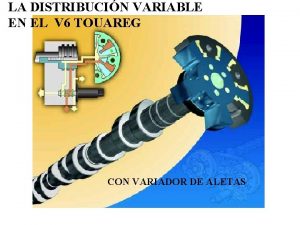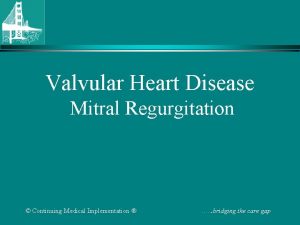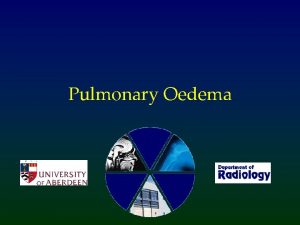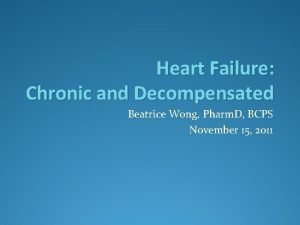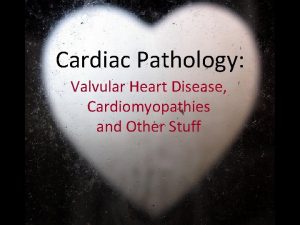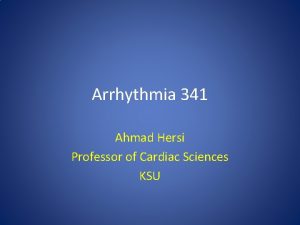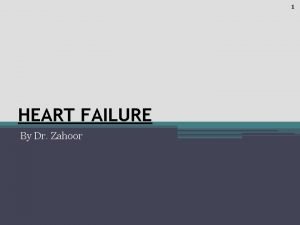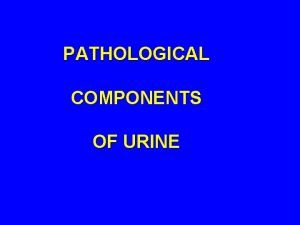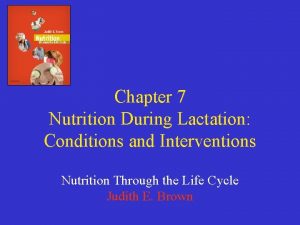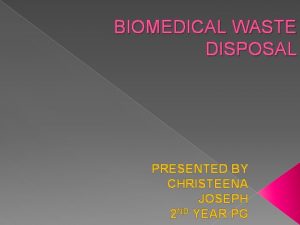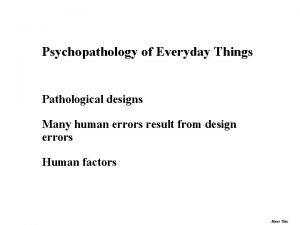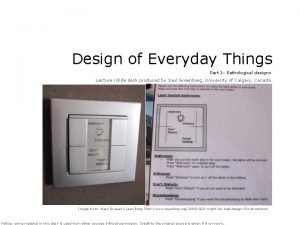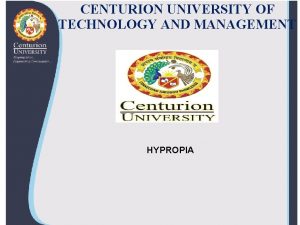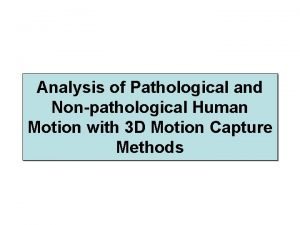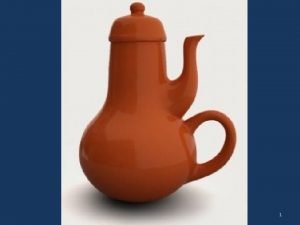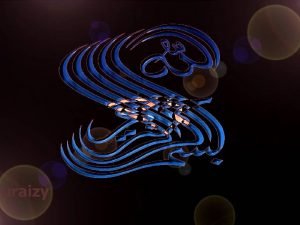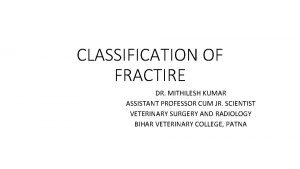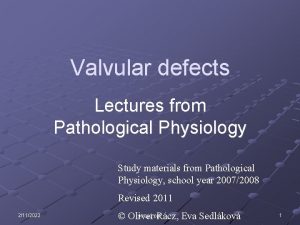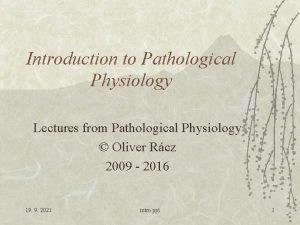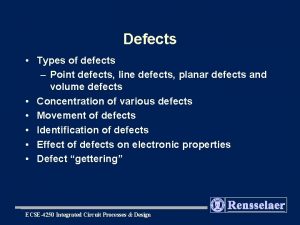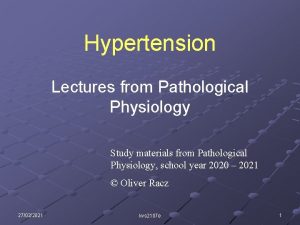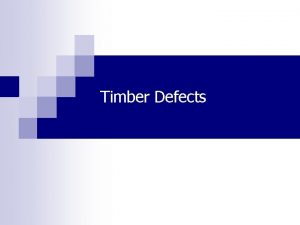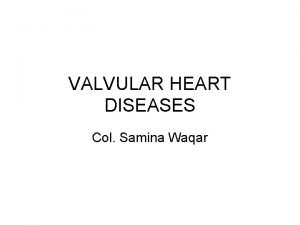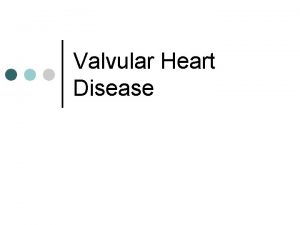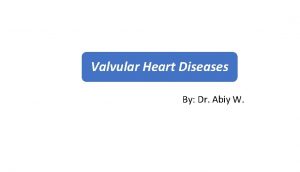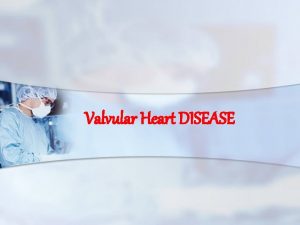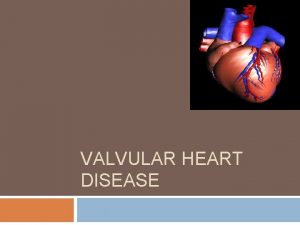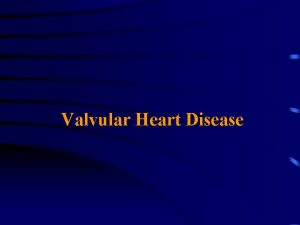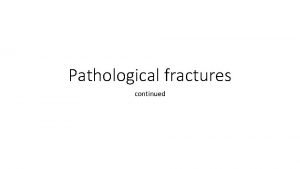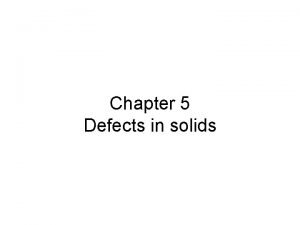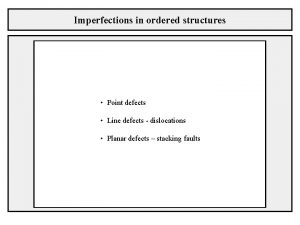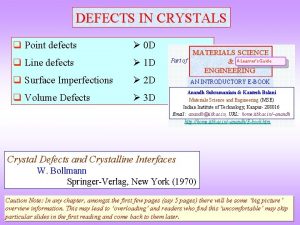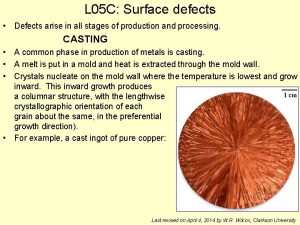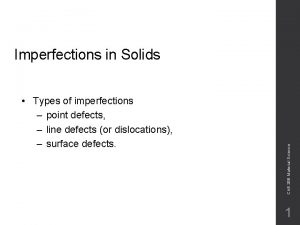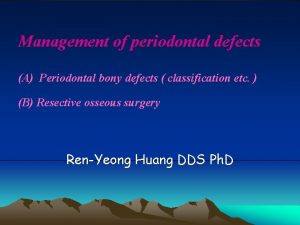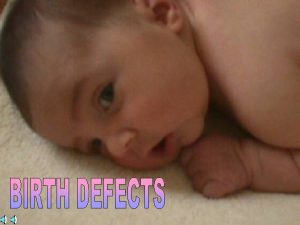Valvular defects Lectures from Pathological Physiology Study materials




























- Slides: 28

Valvular defects Lectures from Pathological Physiology Study materials from Pathological Physiology, 2017/2018 © Oliver Rácz, Eva Sedláková 13. 2. 18 kvs 1802 e 1

13. 2. 18 kvs 1802 e 2

13. 2. 18 kvs 1802 e 3

Valvular dysfunction - introduction Stenosis – block of flow; regurgitation – backward flow For pathological physiology the hemodynamics is the most important. It helps to understand heart failure also in other diseases. Symptoms. auscultation (murmurs), USG – see internal propedeutics. In the past mostly a consequence of rheumatic fever, today this is changing: 13. 2. 18 degenerative processes of valves hereditary causes ( mitral valve prolapse, pulmonary, stenosis) inflammation secondary dilatation (cardiomyopathies, papillary muscle dysfunction) kvs 1802 e 4

13. 2. 18 kvs 1802 e 5

Re cen tly sig nif in old ica nt er inc pe op r e ase le 13. 2. 18 kvs 1802 e 6

Mitral stenosis 10 – 20 years after febris rheumatica From 1 st symptoms to decompensation: 5 – 10 years Often in combination with other valvular defects (aortic insufficiency) 25 years after f. rh 33 % NYHA III, 50 % NYHA IV Narrowing of the ostium from 4 – 6 to 1 cm 2 and less 13. 2. 18 kvs 1802 e 7

Mitral stenosis Pressure gradient between left atrium and ventricle – first only during exercise, later also in rest Left ventricle is intact – not involved in compesation Postcapillary pulmonary hypertension. Over 30 mm. Hg danger of pulmonary oedema Overload of right ventricle Symptoms of left heart failure without dysfunction of left ventricle 3 typical complications – atrial fibrillation, thrombus formation and the danger of embolisation 13. 2. 18 kvs 1802 e 8

Grades of mitral stenosis norm mild Area of ostium (cm 2) 4 -6 2 -4 1 -2 < 1 gradient (mm Hg) < 5 5 -12 12 -20 > 20 Pressure t 1/2 (ms) < 60 60 -100 100 -200 > 200 13. 2. 18 kvs 1802 e middle severe 9

13. 2. 18 kvs 1802 e 10

An old solution TODAY – EARLY VALVULOPLASTIC INTERVENTION THROUGH CATHETRIZATION 13. 2. 18 kvs 1802 e 11

A short diversion towards atrial fibrillation A common dysrythmic condition Different forms – paroxysmal, recurrent, etc. . . and according to hemodynamics (with or without tachycardia) Dg. also without ECG – pulsus irregularis et inaequalis why? In the past – mitral stenosis Today – age, sex (m > w) 60 y. cca 1 %, 80 y. up to 6 % Thyreotoxicosis Cardiac disease in general 13. 2. 18 kvs 1802 e 12

13. 2. 18 kvs 1802 e 13

Atrial fibrillation • Management: According ro rythm, cardiac frequency, risk of embolisation • Pharmacological cardioversion • Electrical cardioversion and modern methods • • Surgical ablation Catheter Ablation Suppression of AF by pacing Internal Atrial cardioverter/Defibrillators • Dissolution of blood clots and monitoring of coagulation !!! 13. 2. 18 kvs 1802 e 14

Mitral regurgation Hemodynamics Regurgitation from LV back into left atrium during systole. Volume overload of LV (to get 5 liters into circulation the heart pumps 7 - 8 and more). Excentric hypertrophy of LV compensates the hemodynamic disorder. Symptoms (except murmurs, ECG and X ray) are similar to stenosis (left heart failure, pulmonary oedema, complications). 13. 2. 18 kvs 1802 e 15

13. 2. 18 kvs 1802 e 16

Mitral valve prolapse Classic description: Valve prolapse with acute regurgitation after necrosis of papillary muscles or as a part of inherited diseases of collagen (m. Marfan, Ehlers-Danlos) RARE New view: Small regurgitation due to mitral valve prolapse visible on USG – usually without hemodynamic consequences and symptoms. COMMON AD disease? Altered histological structure of valves? Increased risk of sudden death? 13. 2. 18 kvs 1802 e 17

Prolaps, new data (2009) Prevalence cca 2, 4 % Familiar type, AD, degeneration of valves and annulus fibrosus (young women) Marfan and other connective tissue diseases CHD and other pathological conditions of the heart Increased risk of infectiousus endocarditis and arrhytmias Migraine ? ? !! 13. 2. 18 kvs 1802 e 18

Aortic stenosis Valvular Causes Hereditary (also cardiomyopathy) 1 % of population has bicuspidal aortic valve Degeneration, calcification Postrheumatic In addition to valvular also 13. 2. 18 Subvalvular – see hypertrophic cardiomyopathy Supravalvular – coarctation of aorta kvs 1802 e 19

Aortic stenosis Hemodynamics Pressure gradient between LV and aorta Pressure overload of LV (as in hypertension) Concentric hypertrophy, well compensated for a long time, diastolic dysfunction. Finally decompensation and left heart failure Pulsus parvus et tardus – insufficient perfusion of tissues, especially of heart muscle 13. 2. 18 kvs 1802 e 20

13. 2. 18 kvs 1802 e 21

13. 2. 18 kvs 1802 e 22

Grades of aortal stenosis Area of ostium (cm 2) gradient (mm Hg) 13. 2. 18 Norm mild middle severe 2 -3 > 1, 5 1, 0 -1, 5 < 1, 0 0 < 50 50 -70 > 70 kvs 1802 e 23

Aortic insufficiency Mostly postrheumatic Hemodynamics: Regurgitation in diastole, volume overload of LV. High systolic and low diastolic pressure – disadvantegous for heart muscle perfusion. Pulsus celer et altus 13. 2. 18 kvs 1802 e 24

Overview of hemodynamics of valvular defects Disorder Timing Overload Notes M. Sten. A ÞV Diastole not of LV ! fibrillation embolisation M. Ins. A ÜV Systole volume „exercise“ Systole pressure pulsus ! Diastole volume pulsus ! Ao. Sten. V Þ Ao Ao. Ins 13. 2. 18 V Ü Ao kvs 1802 e 25

The forgotten ventricle* Often as a „victim“ alebo „bystander“ of overall pathological cardiac or pulmonalry conditions USG inverstigation is more complicated Some anatomical, histological and functional specifics (valves, papillar muscles, trabeculisation of the apical part and contraction) • *Šimková a Kaldarárová, Kardiológia pre prax, 8, 2010, 181 - 187 13. 2. 18 kvs 1802 e 26

The forgotten ventricle – etiology of pathological conditions Pressure overload – stenosis of a. pulmonalis, pulmonary HT, pulmonary embolism (acute!) Volume overload – atrial septum defect, tricuspidal regurgitation Dysfunction of the myocard - MI, cardiomyopathies Obstruction of inflow – tricuspidal stenosis, tamponade, constrictive pericarditis Abusus of some drugs – cocaine, amphetamine 13. 2. 18 kvs 1802 e 27

Tricuspidal regurgitation* Common secondary condition in valvular diseases of the left ventricle, in congenital defects and in left ventricle failure Primary in inf. endocarditis (i. v. drug users), danger of septic pulmonary embolisation Prolaps – together with the left side Ebstein anomaly • *Chňupa P, Kardiológia pre prax 8, 2010, 174 – 180 13. 2. 18 kvs 1802 e 28
 Rbc formation stages
Rbc formation stages Traslape valvular
Traslape valvular Pathophysiology of valvular heart disease
Pathophysiology of valvular heart disease Lvvo heart
Lvvo heart Upper lobe venous diversion
Upper lobe venous diversion Causes of valvular heart disease
Causes of valvular heart disease Pathophysiology of valvular heart disease
Pathophysiology of valvular heart disease Right sided heart failure
Right sided heart failure Pathophysiology of valvular heart disease
Pathophysiology of valvular heart disease Causes of valvular heart disease
Causes of valvular heart disease Causes of valvular heart disease
Causes of valvular heart disease Pathological prisoner syndrome
Pathological prisoner syndrome Pathological components of urine
Pathological components of urine Icterus grading
Icterus grading Pathological generals in repertory
Pathological generals in repertory Pathologic jaundice
Pathologic jaundice Introduction of biomedical waste management
Introduction of biomedical waste management Pathological demand avoidance test
Pathological demand avoidance test Pathological design
Pathological design Pathological design
Pathological design Hyermetropia
Hyermetropia Pathological analysis
Pathological analysis Pathological designs
Pathological designs Thanatology definition
Thanatology definition Communicate fracture
Communicate fracture Rick trebino lectures
Rick trebino lectures Lectures paediatrics
Lectures paediatrics Data mining lectures
Data mining lectures Advanced medicinal chemistry
Advanced medicinal chemistry

